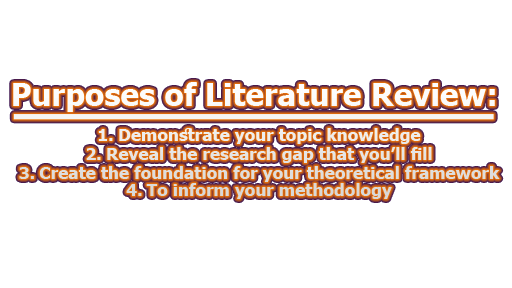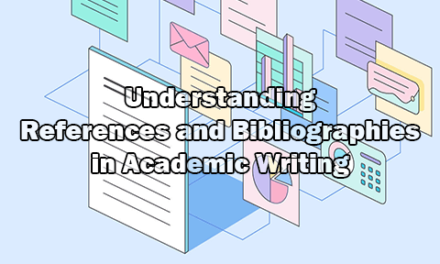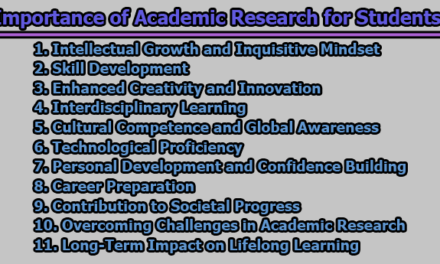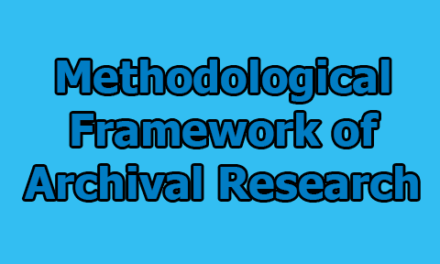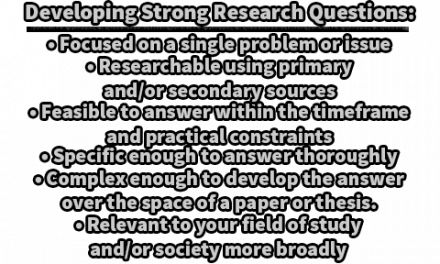A Literature Review (LR) is a summary of the previously written works on a certain subject. The phrase can be used to describe a whole scholarly document or a specific piece of a larger work of scholarship, like a book or an article. In any case, the purpose of a literature review is to give the researcher/author and the audience a broad overview of the body of information that already exists on the subject at hand. An appropriate research question, theoretical framework, and/or study methodology can all be confirmed by a thorough literature review. More specifically, a literature review gives the reader context and places the current work within the body of the pertinent literature. In such cases, the review usually precedes the methodology and results in sections of the work.
Two related concepts that are a part of the larger LR process might be referred to as “literature reviews” in different contexts. The first step is to study the literature, which involves finding and reading up on previous studies that are relevant to your research issue. The second is the actual chapter of your dissertation, thesis, or research project that you write up.
Purposes of Literature Review:
The LR chapter has a number of significant purposes which are briefly being:
- Demonstrate your topic knowledge: The reader (or marker) needs to see that you are knowledgeable about the subject at hand, and that is the simple purpose of the literature review chapter. In other words, a strong literature review chapter shows that you’ve read the pertinent previous research and have a solid grasp of the issues at hand, including who has said what, what has been agreed upon, disputed, and so on. This needs to be more than just a list of who said what; it also needs to take into account previous research to demonstrate how everything ties together and what’s missing.
- Reveal the research gap that you’ll fill: The second purpose of the literature review chapter is to create the groundwork for your own research topic by highlighting the gaps in the present body of knowledge. In other words, your literature review chapter must demonstrate that there are “missing parts” in the larger puzzle that will be filled by your research. By doing this, you demonstrate the originality of your study topic and how it will advance our understanding of it. Therefore, the literature review aids in the justification of your study question.
- Create the foundation for your theoretical framework: A theoretical framework’s foundation is the third purpose of the LR. Although a theoretical framework is not necessarily required for all research topics, if one is, it must be based on your literature assessment.
For example, let’s imagine the goal of your study is to determine the elements that cause office workers to become burned out. In this case, you’d likely develop a theoretical framework that details the potential factors (e.g. long hours, excessive stress, etc), as well as the outcome (burnout). Those elements would need to be revealed in the literature review chapter – they can’t just come from your gut!
Therefore, based on earlier studies about burnout, each probable element in this situation would be uncovered in the literature review chapter and then modeled into a framework.
- To inform your methodology: The fourth purpose of the literature review is to guide your choice of the research approach. Your research’s goals, objectives, and questions will have a big impact on the approach you choose. Given that you’ll be analyzing studies that address a subject that is closely related to your own, it stands to reason that you could gain a lot from their (well thought-out) methodology.
Therefore, it is important to pay particular attention to the research design, methodology, and procedures utilized in related studies when you are reviewing the literature and to use this information to guide your methodology. You can “borrow” from previous research quite frequently. Since you can utilize previously validated measures and scales, this is especially true for quantitative investigations.
Best Way to Find Articles for Literature Review:
Finding the best quality journal articles is necessary for writing an admirable literature review. As you presumably already know, not all research is created equally, you need to make sure that the foundation of your literature review is solid research.
Google Scholar is an excellent place to start. Google Scholar is basically the academic equivalent of Google, using Google’s resourceful search competencies to find related journal articles and reports. It obviously doesn’t cover every resource, but it’s a great place to start if you’re planning a literature review because it can rapidly show you what the most well-known studies in your field are.
One drawback of Google Scholar is that it is only a search engine; it lists the articles, but frequently does not host them. So, when you click through to journal websites, you frequently encounter a paywall.
Fortunately, your university should grant you access to their library, allowing you to locate the article titles using Google Scholar and then conduct a name-based search in their online library. You might also have access to ResearchGate through your university, which is a fantastic resource for existing research.
You might go following journal sites; Emerald Insight, BioMed Central, SAGE Open, Springer Open, JSTOR, The Royal Society Publication, Science and Education Publishing, etc. In the searching process, you should follow ‘the Boolean search techniques as well.
Keep in mind that choosing the ideal search terms is crucial to getting the right information at first. In order to find new publications, pay close attention to the keywords mentioned in the journal articles you read. Choosing the right keywords is crucial during the initial search process, so look over the terms used in available articles.
Last but not least, check current sources carefully. In the realm of research, things develop quickly, therefore you need current evidence to substantiate your literature. It doesn’t follow that the classics are obsolete, but you must make sure they are current. Citing research that was well-liked but whose conclusions were later shown to be incorrect is useless. Use Google Scholar’s ability to filter results to a certain date range to your advantage in order to keep your reading current.
The process to Write Literature Review:
The process to write a literature review mainly depends on your topic area and your research aims and objectives. Your LR chapter may be organized according to a theme, group, variable ordered chronologically, or according to concepts in your area of study.
Generally speaking, it’s also a decent idea to start broadly, then narrow down, finishing your literature review close to your research objectives and questions. However, there’s no universal 1 “right way” to write your literature review. The most significant thing is not to discuss your sources one after the other like a list – your literature review needs to synthesize the research, not summarize it.
In the end, you must write your literature review so that it successfully communicates the most crucial facts; it must tell a logical tale in a way that is easy to understand.
Your LR should include an introduction, body, and conclusion that are all well-defined, just like other chapters.
The introduction section should be summarized what you want to discuss in your literature review.
The body section of your literature review can be organized by chronology, theme, or methodology. The accurate structural method depends on what you’re trying to attain with your research.
The conclusion section should summarize the main findings from your literature study and establish connections to your research questions.
It is apparent that a good literature review should synthesize the existing research in relation to the research aims, not simply summarize it.

Assistant Teacher at Zinzira Pir Mohammad Pilot School and College

